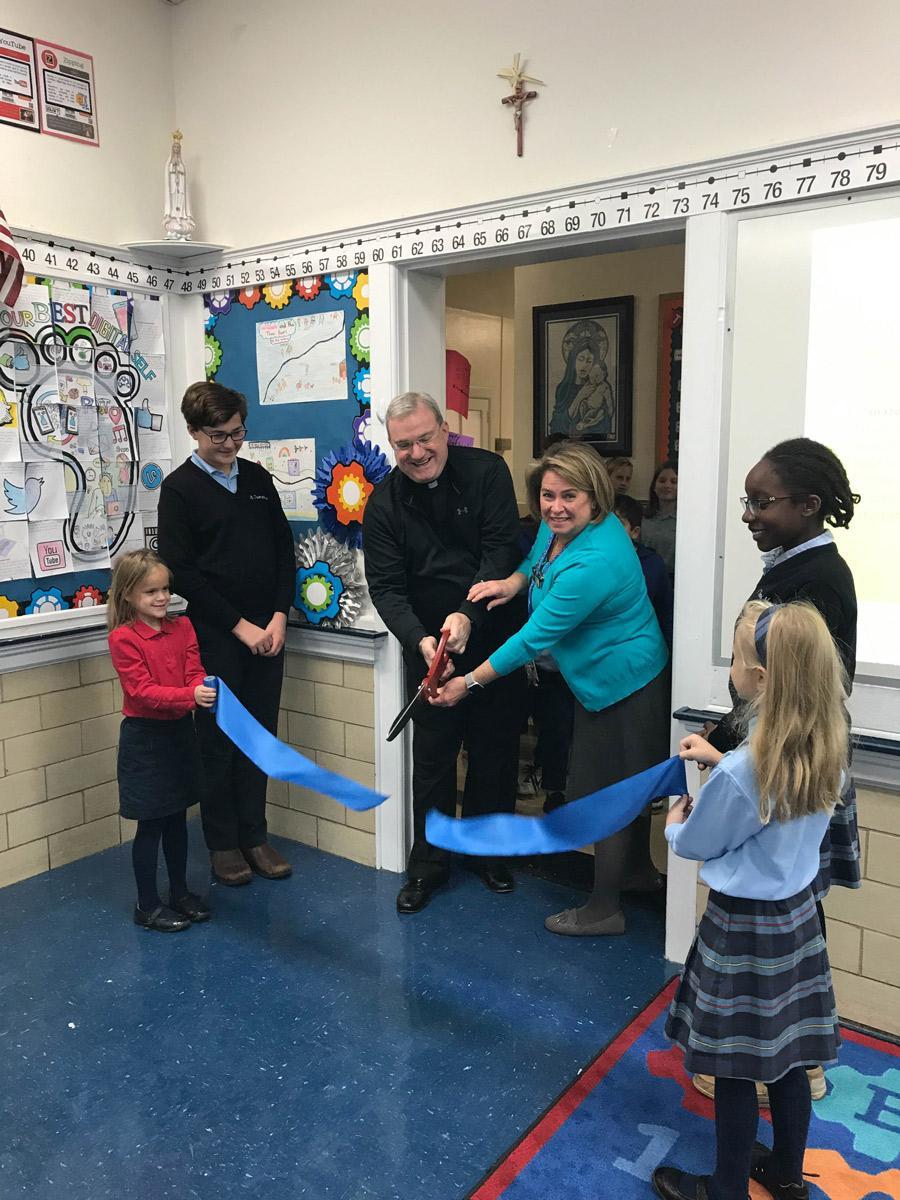Technology
Technology Education & STEM Program Overview
As lifelong learners and followers of Jesus, students should strive to become citizens who are capable of making significant contributions to our global society. They must also become aware of the social and ethical impact of technology. To this end, STM endeavors to make our students not only knowledgeable, but also effective technology users.
Our goal is to present and strengthen the skills students need to access, interpret, and synthesize information which is constantly changing. Thus, technology will be used as a tool for learning and developing critical thinking skills across the content area. Having students acquire these skills will result in the development of self-directed learners who can independently and cooperatively apply technology to solve problems and make informed decisions.
Classrooms at STM are equipped with next-generation Epson Brightlink interactive projectors and 1:1 student to device ratio in K-8. Students receive weekly technology instruction including typing, coding, programming and internet citizenship. Grades K-3 have classroom iPad sets for their exclusive use while upper grades Google Chromebooks and HP touchscreen laptops.
Design Lab - established 2020
St. Thomas More Cathedral School is pleased to announce the official opening of the Design Lab for students in PreK to 8th grade - a centralized location for innovative technology where students and faculty can collaborate on STEM projects while sharing ideas, equipment, and knowledge. This new learning environment provides multiple opportunities for students to expand their critical thinking skills in team settings where students gather and work together on rich, open-ended tasks.
Students visit the Design Lab several times each month for instruction. Classroom teachers have the ability to reserve the space for their students to work on projects. The Design Lab format fosters creativity between teachers, grade levels and multi-level learning groups that are not otherwise possible in the single classroom setting.
The Design Lab houses a multitude of technology equipment, including the following:
Robotics - Lego WeDo 2.0, Ozobots, LittleBits, etc..
Arduinos - computer components to build and practice programming skills
Coding activities - Code Hopper, Robot Turtles, Coding Robot Mouse, Arduino kits, Makey Makey, Ozobots, Osmo Genius with experiential materials, web-based platforms such as Scratch and Scratch, Jr.
Jellybot 3D Printers and supplies
Makerspace supplies
Robotics - Lego WeDo 2.0, Ozobots, LittleBits, etc..
Arduinos - computer components to build and practice programming skills
Coding activities - Code Hopper, Robot Turtles, Coding Robot Mouse, Arduino kits, Makey Makey, Ozobots, Osmo Genius with experiential materials, web-based platforms such as Scratch and Scratch, Jr.
Jellybot 3D Printers and supplies
Makerspace supplies
STEM activity kits
Other modalities in use include: FOSS Science, Everyday Mathematics, Google Classroom; SeeSaw; Class Dojo; TinkerCad; Reading A-Z; Prodigy; Khan Academy; Scratch & Scratch Jr.; Google Applied Digital Skills; and CS First Robotics.
STM Mission Possible: STMSat-1 (2012 - 2016)
The STM Sat-1 mission was initiated to increase student interest and engagement in STEM project based learning. To achieve this, STM students actively participated in a mission to design and build a Nano satellite to observe and take photos of the earth from space and share the images with students from around the world. The school acquired a CubeSat kit and students were involved in many different processes including CAD and performance testing to analyze the design of the solar power source, communication method, antennae, camera and other payload. Rapid Prototyping (3D printing) was used to produce a model to visualize the necessary components and how to incorporate the payload. The original thermal heat antennae deployment design did not meet NASA requirements and a new time-deployed antennae was substituted. The satellite successfully passed the fit-check and vibration test conducted by NanoRacks. Student mission specialists performed high altitude camera and communication system tests and received images from the Ham Radio/SSTV. The STM Sat-1 was approved for launch on December 6, 2015 from Kennedy Space Center and deployed from the International Space Station (ISS) on May 16, 2016. Students were able to track STM Sat-1 as it traveled around the earth, but images were not successfully transmitted from the cube. More than 10,000 grade school students participated in the mission.



